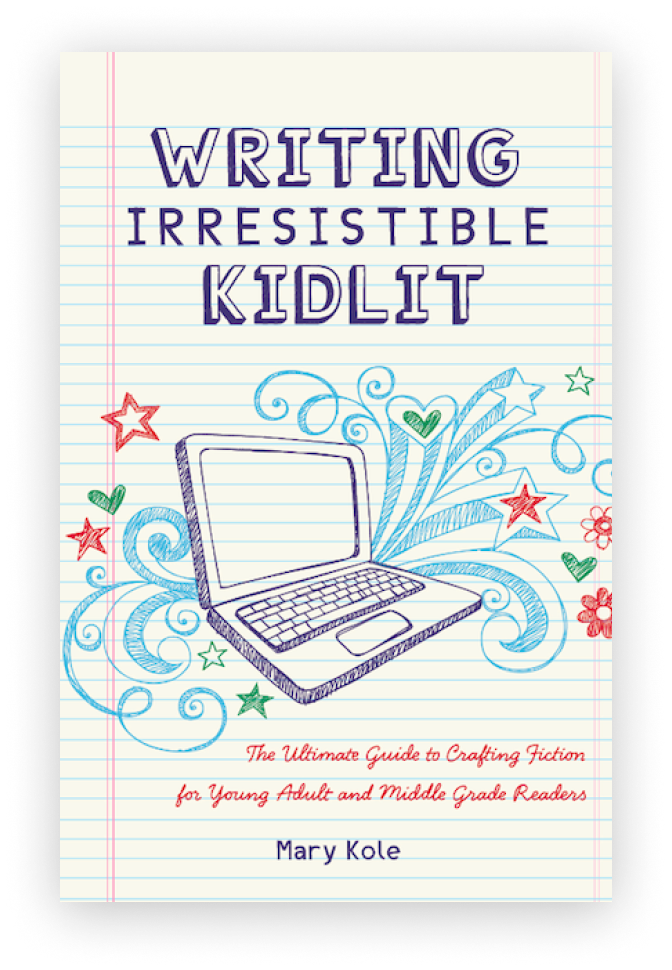Breaking Into Children’s Writing
By Mary Kole
Mary Kole is a former literary agent, freelance editor, writing teacher, author of Writing Irresistible Kidlit, and IP developer for major publishers, with over a decade in the publishing industry.
Children's writing holds a unique place in the world of literature. From picture books to middle grade novels, children’s writing brings joy and wonder to the lives of young readers across the globe. If you are a writer interested in pursuing children’s writing, there is much to consider when it comes to craft and publication. Here, we’ll explore the different types of children's writing, the various categories of children's books, and the essential best practices that every aspiring children's writer should keep in mind.
Types of Children's Writing
Before diving into the different categories of children's books, it is crucial to understand the various types of children's writing. There are six main categories with unique target audiences. Picture books are perhaps the most well-known type of children's writing. These books are typically aimed at young children and feature illustrations on every page to accompany the story. Chapter books, on the other hand, are longer and contain fewer illustrations, making them more appropriate for newly independent older readers, generally ages seven to nine. Middle grade novels (MG) are aimed at kids between the ages of eight and thirteen and are typically over 40,000 words in length. Lastly, young adult (YA) novels are targeted towards teenagers, generally ages fourteen and up, though there can be younger YA projects, and older as well. There are also board books and early readers, which are less robust categories for young readers.
Genres of Children's Books
Children's writing is further categorized by topic and subject matter, including some well known genres like fantasy, historical fiction, mystery, and romance (obviously appropriate for young adult novels, but maybe not younger projects). You also have different formats, like graphic novels, and nonfiction children’s books for all of the above audiences as well. It's important to understand the specific target reader you are writing for so that you can craft your story accordingly.
Best Practices for Children's Writing
When it comes to writing for children, there are some best practices that can help you succeed. For one, it's essential to understand your target audience and craft a story that resonates with them. Your language should be appropriate for your reader (or listener), though you shouldn’t shy away from complex ideas or themes. Lastly, when it comes to getting published, it's important to do your research on literary agents and publishing houses that are seeking submissions for children's books. Almost every major publisher has a children’s writing imprint, but not all of them are open to unagented submissions.
Pursuing Publication for Your Children’s Writing
Getting published in the world of children's writing can be a competitive and challenging journey. One way to increase your chances of success is to attend writing conferences and writing workshops to network with agents and publishers, as well as meeting other writers. Perhaps the most important thing to do as you work on your own craft is to get to know the market, and read like a writer, inside your category, and outside of it.
Additionally, crafting a polished and professional query letter can help catch the attention of potential agents and publishers. Lastly, be prepared for writing rejection and don't let it discourage you. Persistence is key when it comes to achieving success as a children's writer.
The Importance of Children's Writing
Children’s writing holds a special place in the hearts of young readers and can inspire a love of reading and learning that can last a lifetime. If you're interested in pursuing children's writing, understanding the various categories, types of writing, and best practices can help you succeed in this competitive field.

Click here to purchase Writing Irresistible Kidlit, my book on fiction craft for MG and YA novels, out from Writer's Digest Books. This will show you my writing craft philosophy and give you lots of valuable advice, including tips for the novel revision process and self-editing. There are over 35 example novels cited and discussed throughout. It’s a valuable resource for any writer’s toolkit.



